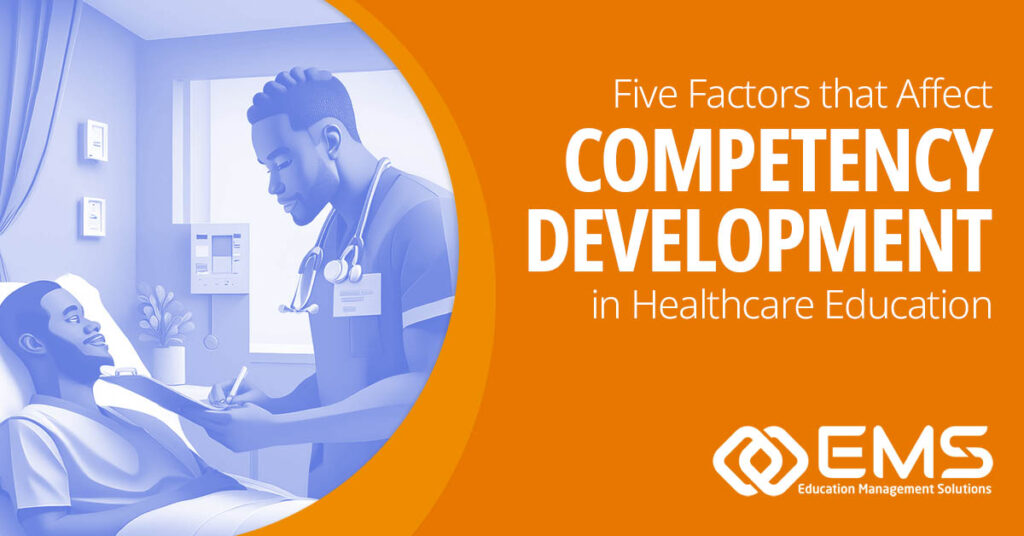Competency development goes beyond traditional healthcare-centric educational metrics. A focus on competency-based instruction relies not just on the imparting the application of skills, but also concentrating on a holistic approach to learning that results in improved critical thinking, and ultimately, better decision-making in real-life scenarios.
This methodology results in future healthcare practitioners who are more capable of delivering compassionate and effective care that is based on the latest evidence. But what are the most important obstacles facing educators who are shifting to a more competency-based curriculum? In this post we’ll examine five factors that play a crucial role in the change to a more competency development focus in healthcare education.
1. Curriculum Redesign
Creating a competency-focused curriculum involves reorganizing the educational framework to emphasize specific competencies that healthcare professionals must master. This may require an overhaul of course content, structure, and sequence to ensure competency development is prioritized over mere completion of course hours.
This new curriculum must accurately reflect the essential skills and knowledge required in the healthcare environment, aligning with real world competencies. Input from industry experts, healthcare providers, and professional associations is crucial to ensure that learning objectives are in line with current best practices and patient care standards.
2. Faculty Development
Training for this new pedagogical approach ensures faculty members are proficient in Competency-Based Education (CBE) principles and teaching methods. Workshops, seminars, and continuous professional development programs are essential to equip them with strategies for effective competency-based instruction and assessment.
Transitioning to CBE can meet resistance from faculty accustomed to traditional methods so getting staff buy-in can be challenging. It is important to involve them in the development process, address their concerns, and highlight the benefits of CBE for students and ultimately for patient care. Faculty support and enthusiasm are crucial elements for successful implementation any competency-based curriculum.
3. Assessment Methods
Effective CBE requires the development of assessments that accurately measure whether students have achieved required competencies. This includes creating specifically tailored objective structured clinical examinations (OSCEs), simulation-based assessments, and other practical evaluations that test real-world application of skills and the competencies outlined in the new curriculum.
Implementing a mix of formative assessments (ongoing assessments to guide learning) and summative assessments (final evaluations of competency mastery) helps ensure that learners receive continuous feedback and opportunities to improve, as well as definitive evaluations of their abilities.
4. Learning Resources and Support
Access to high-quality educational materials, including advanced simulation labs, online resources, and interactive tools, is vital. These resources should facilitate hands-on practice and real-world application of proficiency in a controlled environment, aiding in a more holistic approach to learning that extends students’ education beyond just skill assessment.
Additionally, providing strong academic support systems, such as tutoring, mentoring, and counseling, helps students navigate self-directed learning. Personalized learning plans and regular feedback sessions guide students toward achieving their competencies in a timely manner.
5. Regulatory and Accreditation Changes
Programs must ensure they meet the standards set forth by accrediting bodies such as the Accreditation Council for Graduate Medical Education (ACGME) or similar organizations. These standards typically emphasize the need for clearly defined competencies and rigorous assessment methods. Making sure your new curriculum lines up harmoniously with needed accreditation standards is vital.
Healthcare education programs must also adhere to regulations set by governmental and professional bodies to ensure legal compliance and professional recognition. This may involve regular program reviews, updates based on new guidelines, and transparent documentation of competency attainment.
Reaping the Benefits of Competency Based Education
By addressing these challenges head on, healthcare education programs can confidently transition to Competency Based Education, ultimately improving the training and preparedness of healthcare professionals.
Education Management Solutions (EMS) is dedicated to empowering educators, institutions, and learners with advanced simulation and competency tracking solutions that promise not just superior skills training but a strategic pathway to improved patient care and operational efficiency. Discover how by partnering with EMS, healthcare education providers can look forward to a future where the gap between education and practice is not just bridged but eliminated, ensuring a healthcare workforce that is competent, confident, and ready to meet the challenges of modern patient care head-on.

